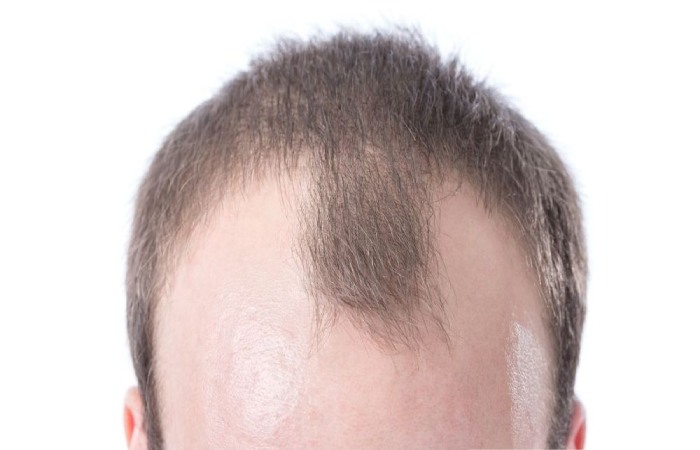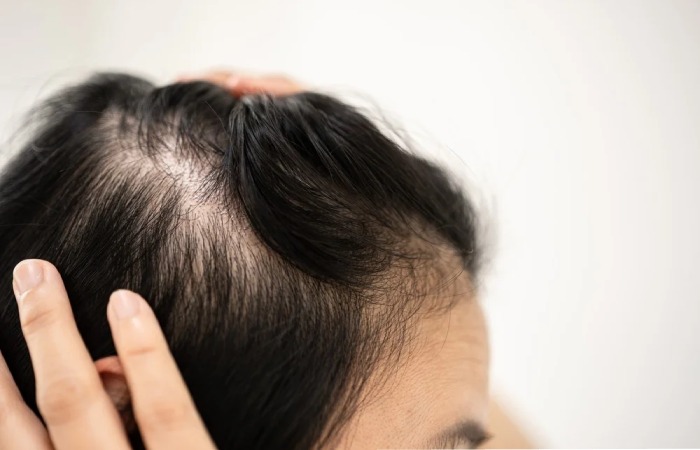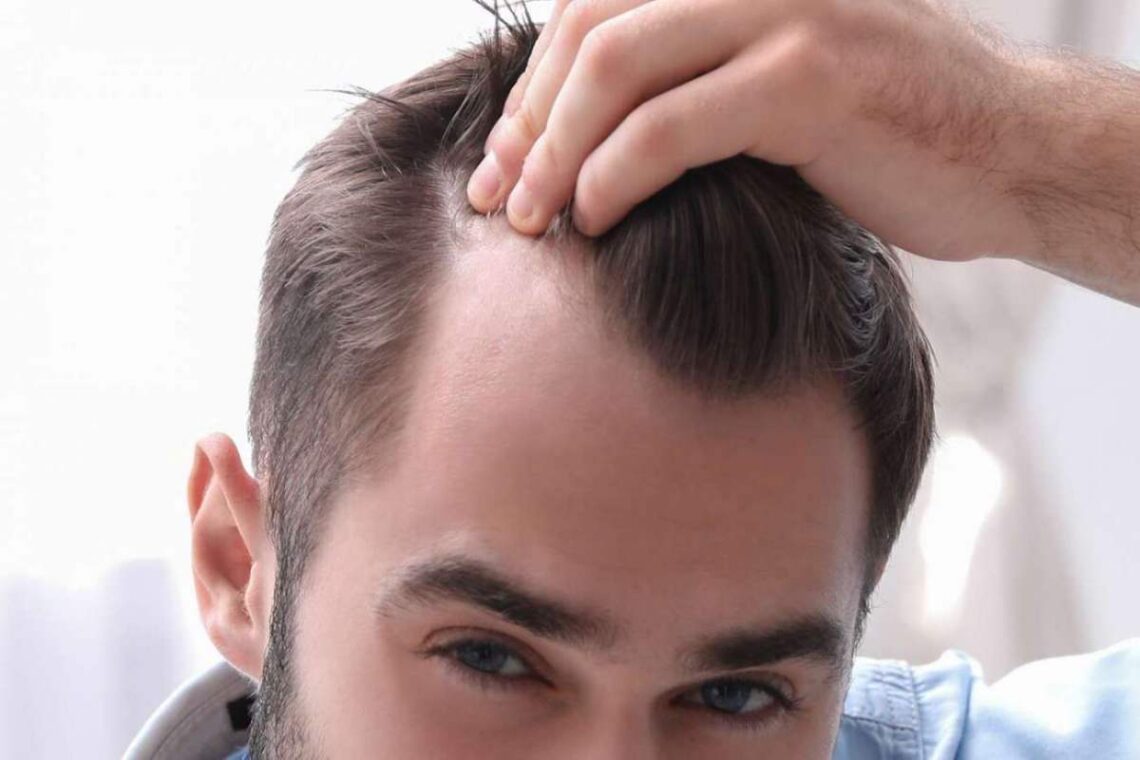How To Tell If Your Hairline is Receding – Thin hair above the temples that forms an M or V shape is often how your hairline recedes. Other symptoms include thinning hair and a zigzag pattern along the hairline.
Aging, stress, and genetics are often responsible for receding hair. This form of hair loss occurs when you experience hair loss along your entire hairline or temples. Persons with androgenic alopecia (male or female pattern baldness) often experience hair loss.
What is A Receding Hairline?

Since people are different and so is their scalp, there are many types of hairlines. That’s why it’s hard to say what a normal hairline should look like. Some medical professionals, like Dr. Anthony Yoon, believe that a man’s hairline must be 6-8 cm from his forehead, while for women it should be about 5-6 cm. However, this can vary depending on your genetics.
Also, it doesn’t stay the same during your life, but changes with age, so it can be hard to spot the difference between a mature hairline and a receding one.
However, hair experts agree that if your hairline suddenly recedes 1.5-2 cm from its original position and is accompanied by thinning hair at your temples and/or crown. If it does, you’re likely experiencing a receding hairline.
How to Tell if Your Hairline is Receding
The key symptoms of hair loss are hair loss or thinning above the temples. A receding hairline can range from minor to severe, with no hair left on the top of the head.
Many symptoms of thin knee include:
- A band of light skin over the forehead and temples where hair has fallen out.
- A yellow, red, or skin-colored rash along the hairline follow by hair loss.
- Complete frontal baldness extending to the back of the scalp.
- Total hair loss or thinning of hair above the temples creating an “M” or “V” shaped hairline.
- Mild, patchy hair loss above the temples.
- Hair loss above the temples
- A zigzag pattern or bald spot along the hairline.
Causes
Hair loss can be began by stress, genetics, and conditions that affect the hair follicle. Some people may also be more prone to hair loss due to lifestyle selections or illness.
Androgenetic Alopecia

Both men and women can experience hair loss. It is more common in men with androgenetic alopecia or male pattern baldness, specially if their parents also suffered from it.
High levels of dihydrotestosterone (DHT) are another contributing factor to androgenetic alopecia and receding hairline. DHT is a sex hormone come from testosterone that can shrink hair follicles, shorten hair, and disrupt the hair growth cycle. It is also associated with female pattern hair loss, but this pattern does not usually cause hair loss.
Stages of Hairline Is Receding
A dermatologist can help you find treatments that help prevent or regrow hair loss in the future. Male pattern baldness usually occurs around age 50, but some people may start losing hair in their late teens and early twenties.
The different hairline stages involved in male pattern hair loss include:
- Receding hairline: Mild hair loss or thinning begins just above the temples or along the entire hairline.
- Proliferative hair loss: Hair loss progresses toward the temples till the hairline resembles an “M,” “U,” or “V.”
- Baldness on the top of the head: Baldness on the top of the head or on the top of the head occurs when the hairline on the top of the head recedes. A large strip of hair will be left between the hairline and the bald spot.
- Receding hairline and growing bald spots: More severe hair loss leaves a thin strip of hair among two bald areas.
- Receding hairline and baldness: Thin patches of hair appear on the top of your head or are joined by a bald spot.
- Frontal baldness: Your hairline has receded and you have no hair on the top of your scalp. Only a “U” formed strip of hair will remain on the sides of your head.
Medical Treatments
This hair loss and thinning can upsetting, no matter your age. Some management and treatment choices may mask hair loss or help you raise hair in those sparse, balding spots.
- Corticosteroids
- Finasteride
- Hair Transplant
- Laser Therapy
- Minoxidil
- PRP Therapy
Conclusion
A receding hairline means the hair is losing a line on the forehead, whereby it is usually hereditary and due to aging, associated with male pattern baldness or frontal fibrosing alopecia. Visiting a dermatologist and diagnosing a receding hairline early assists one in preventing future hair loss and possibly regrow hair where was lost.

